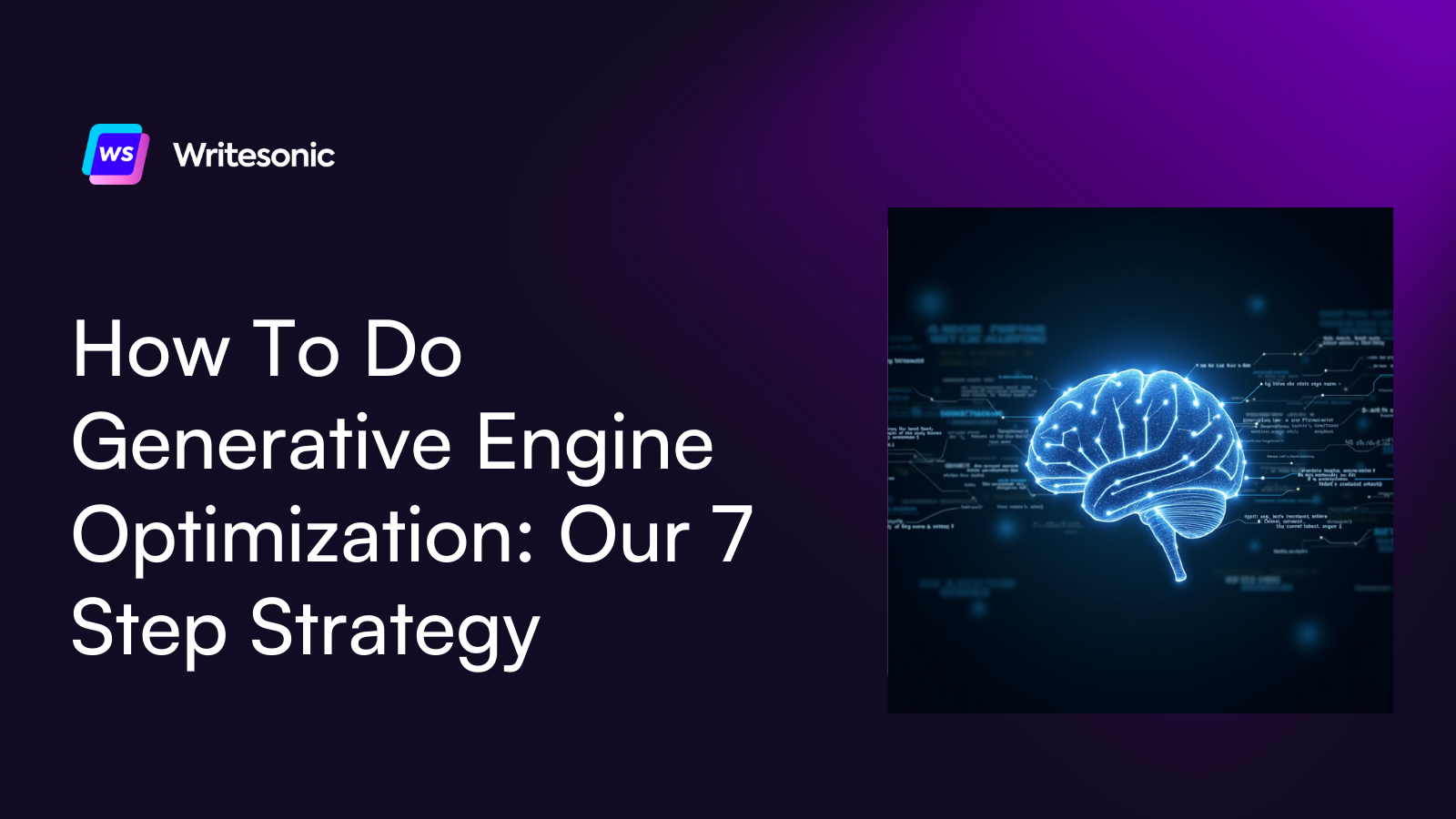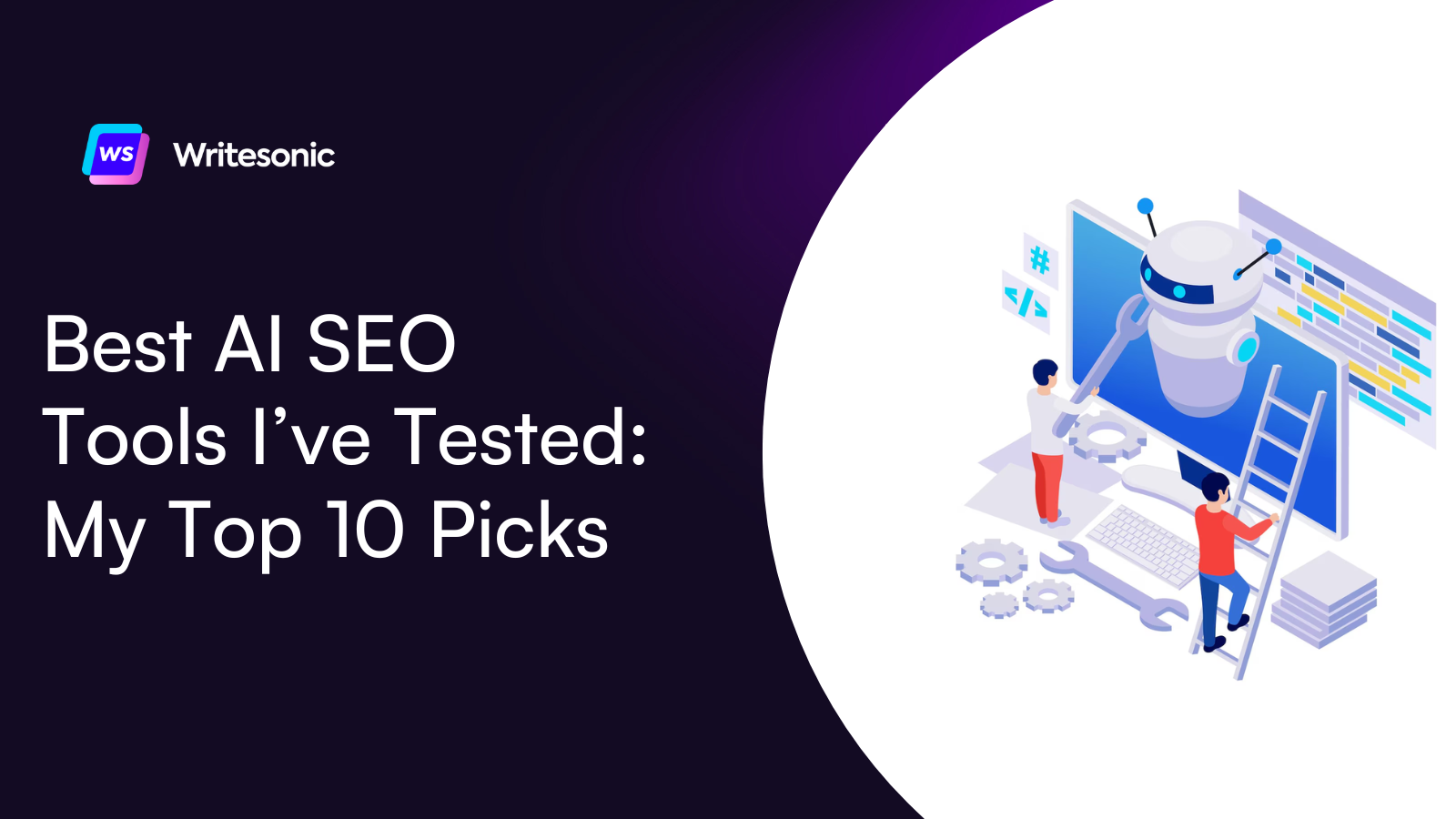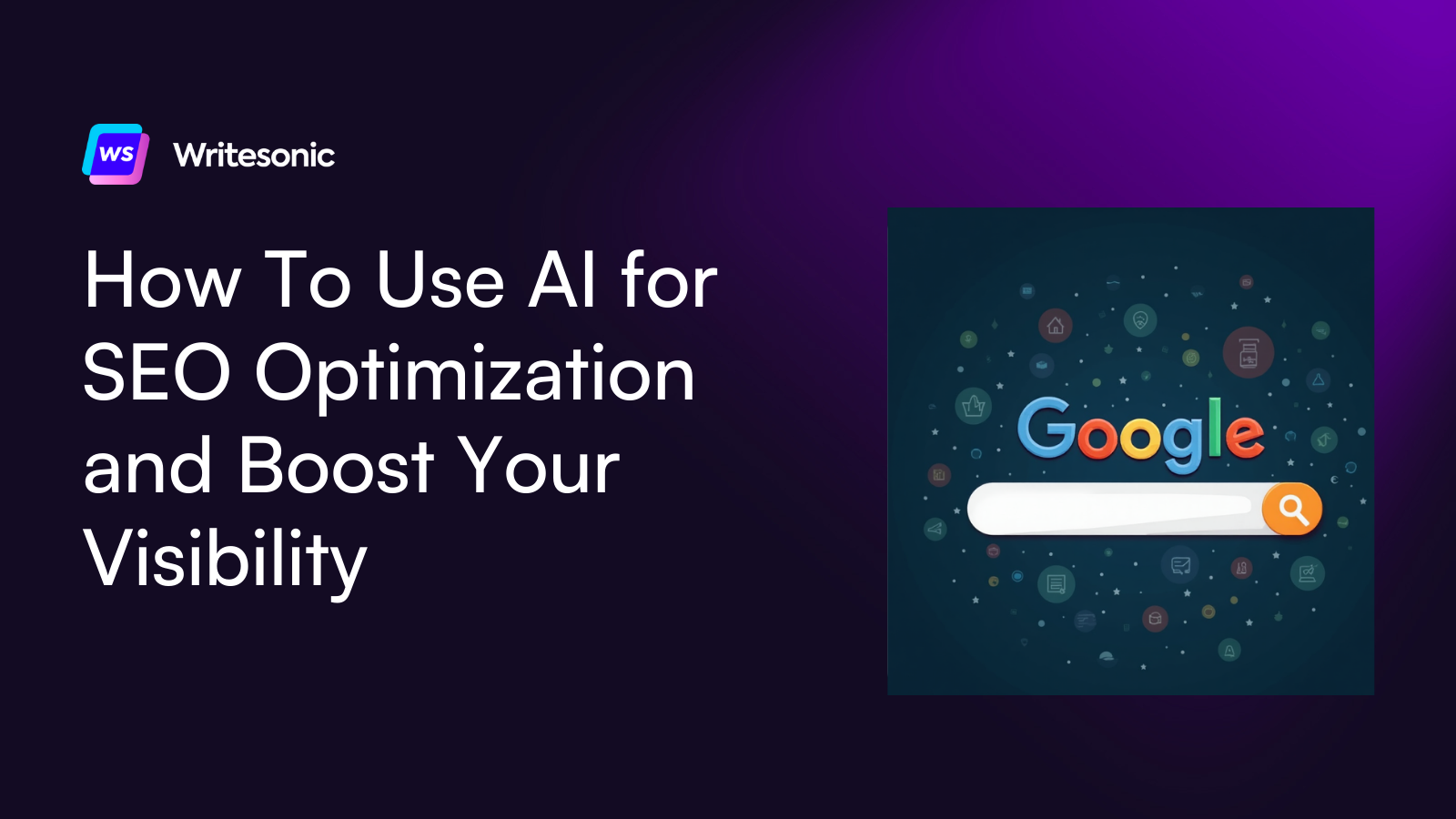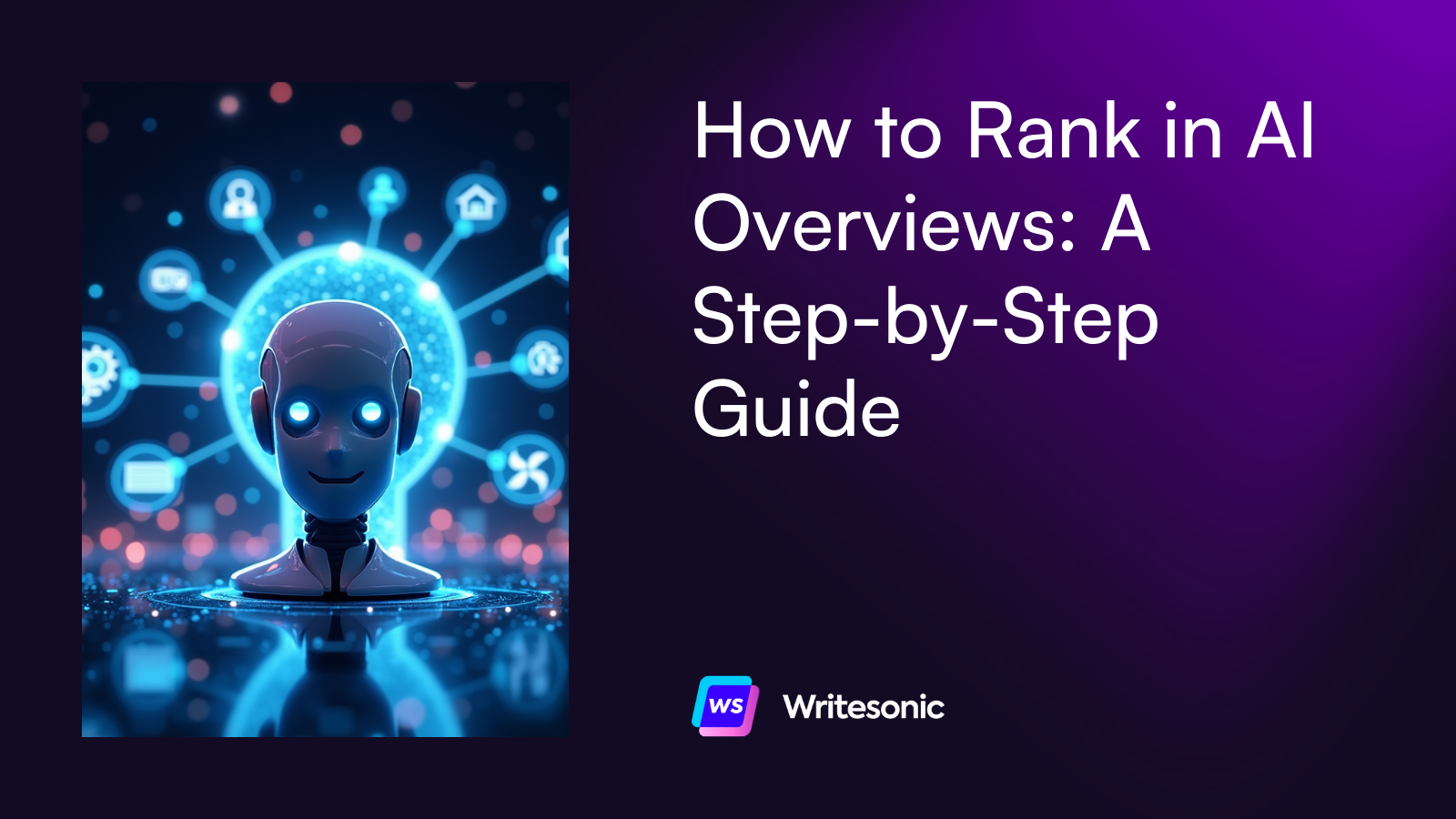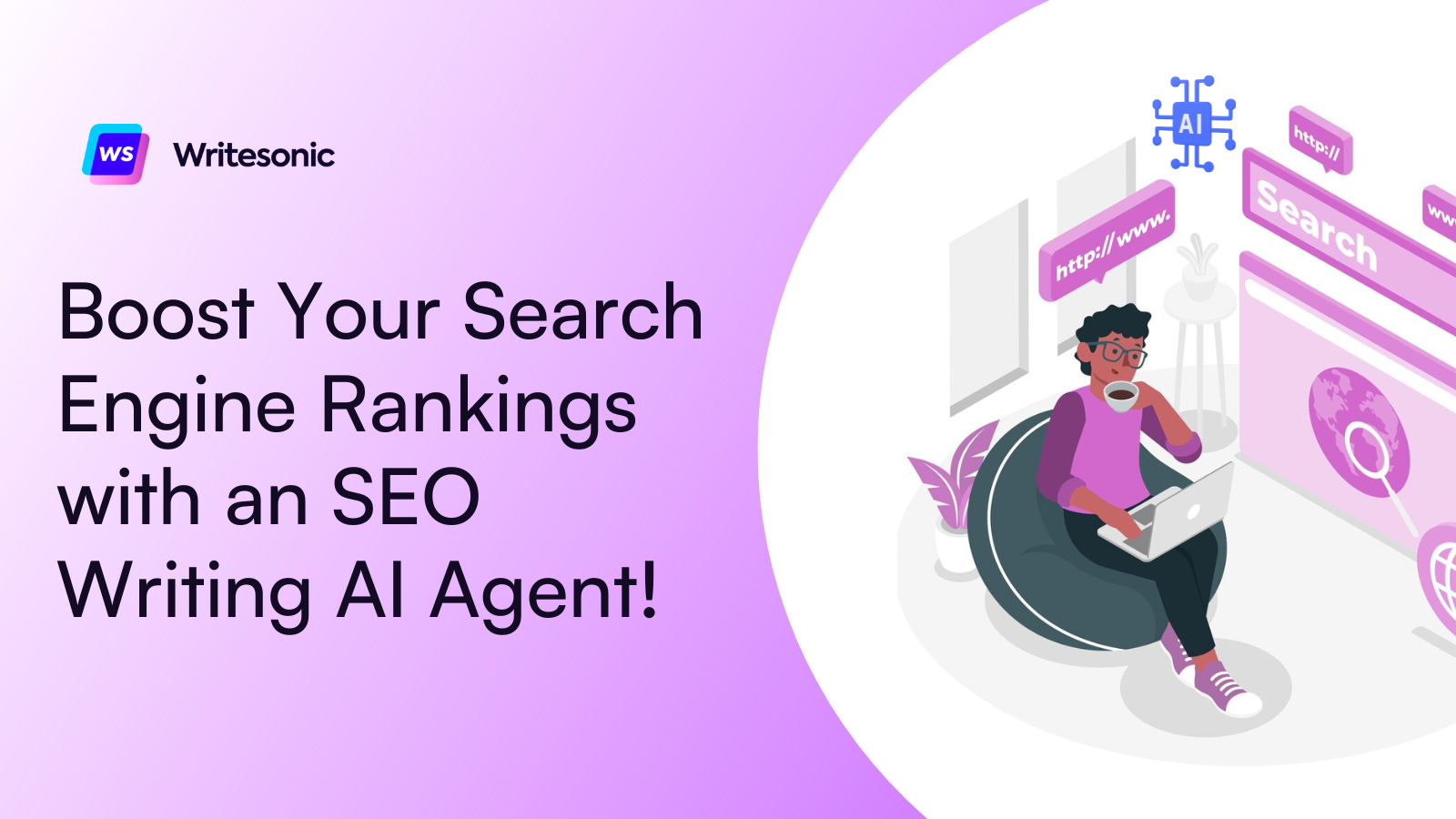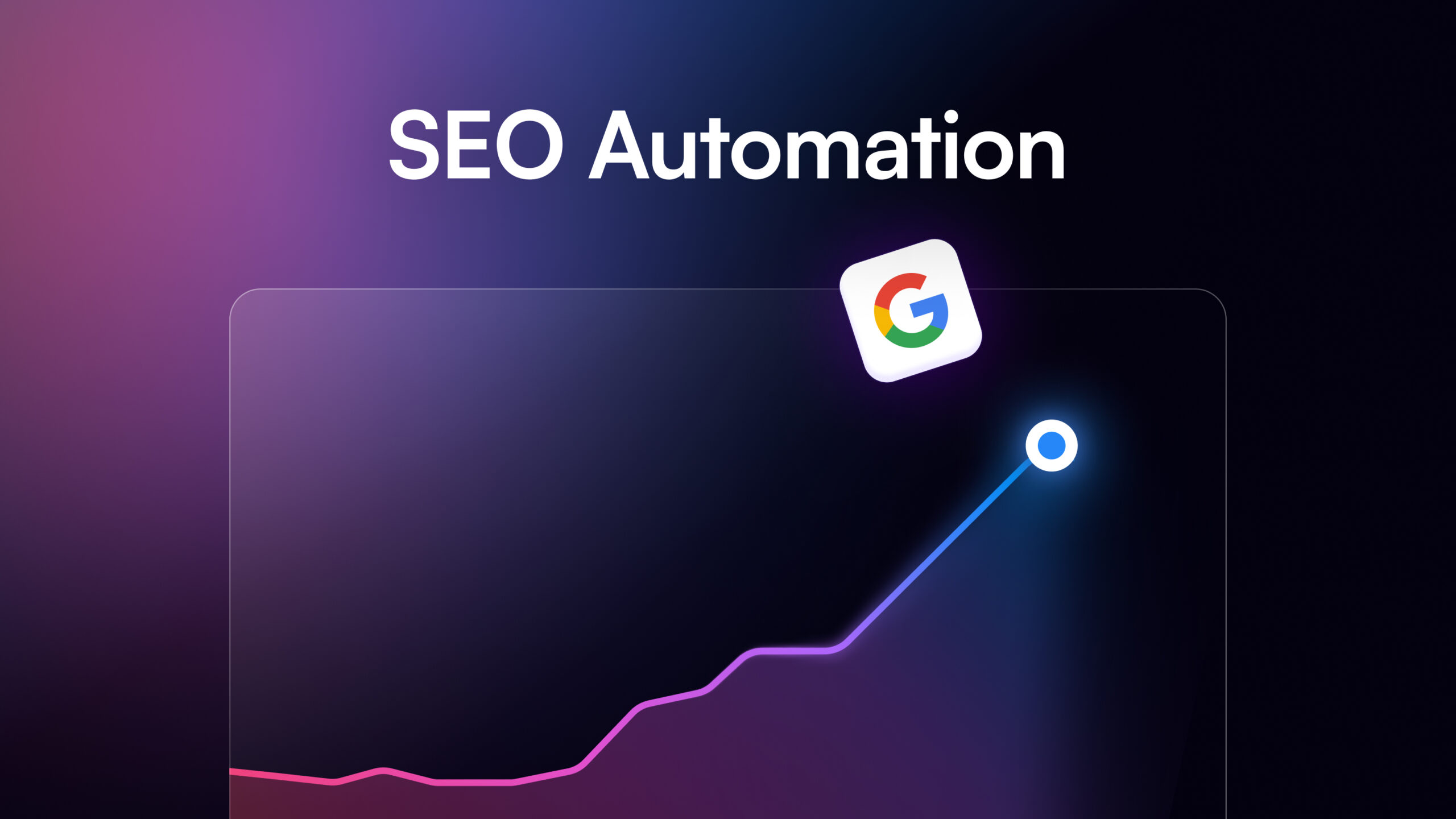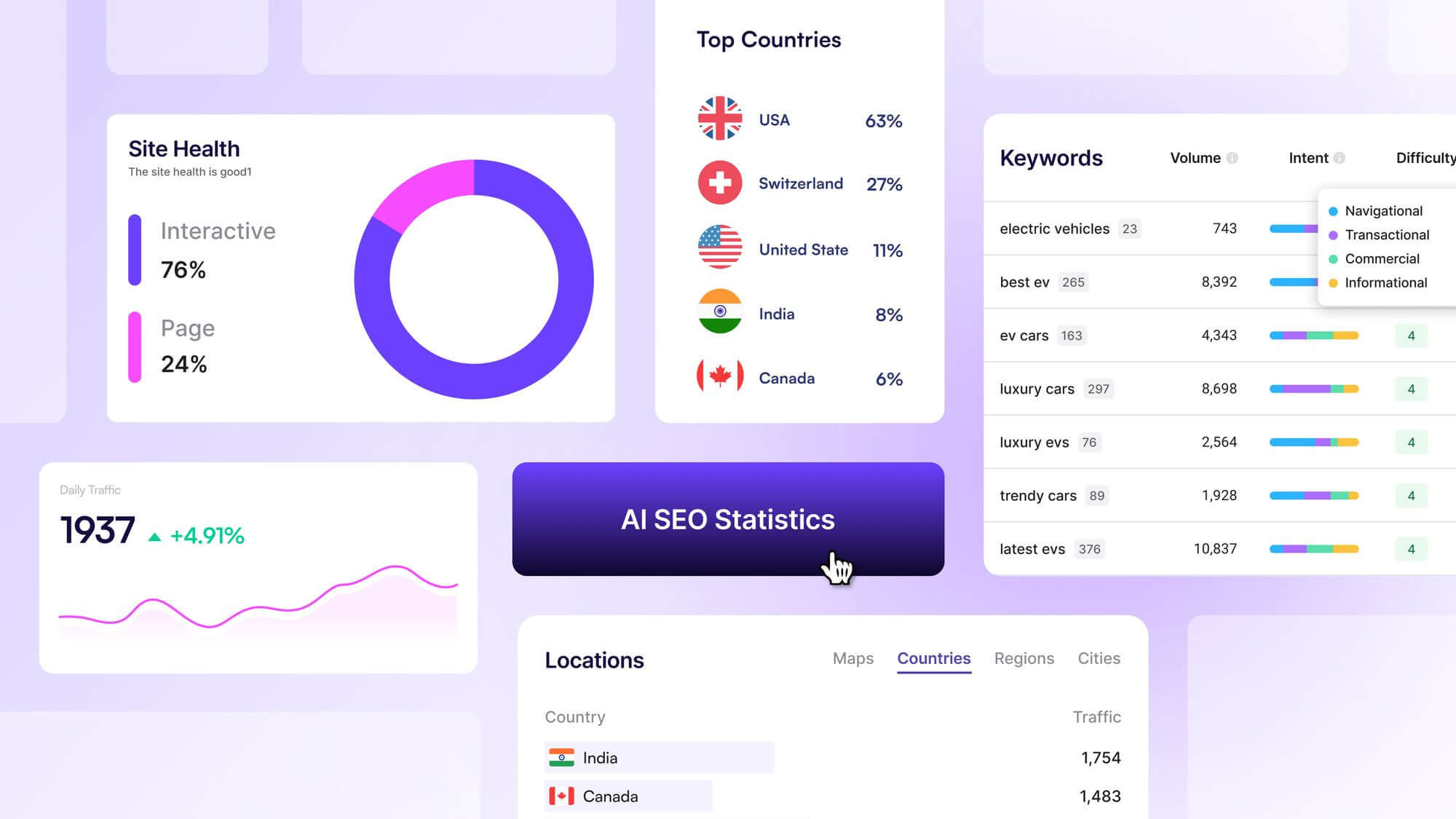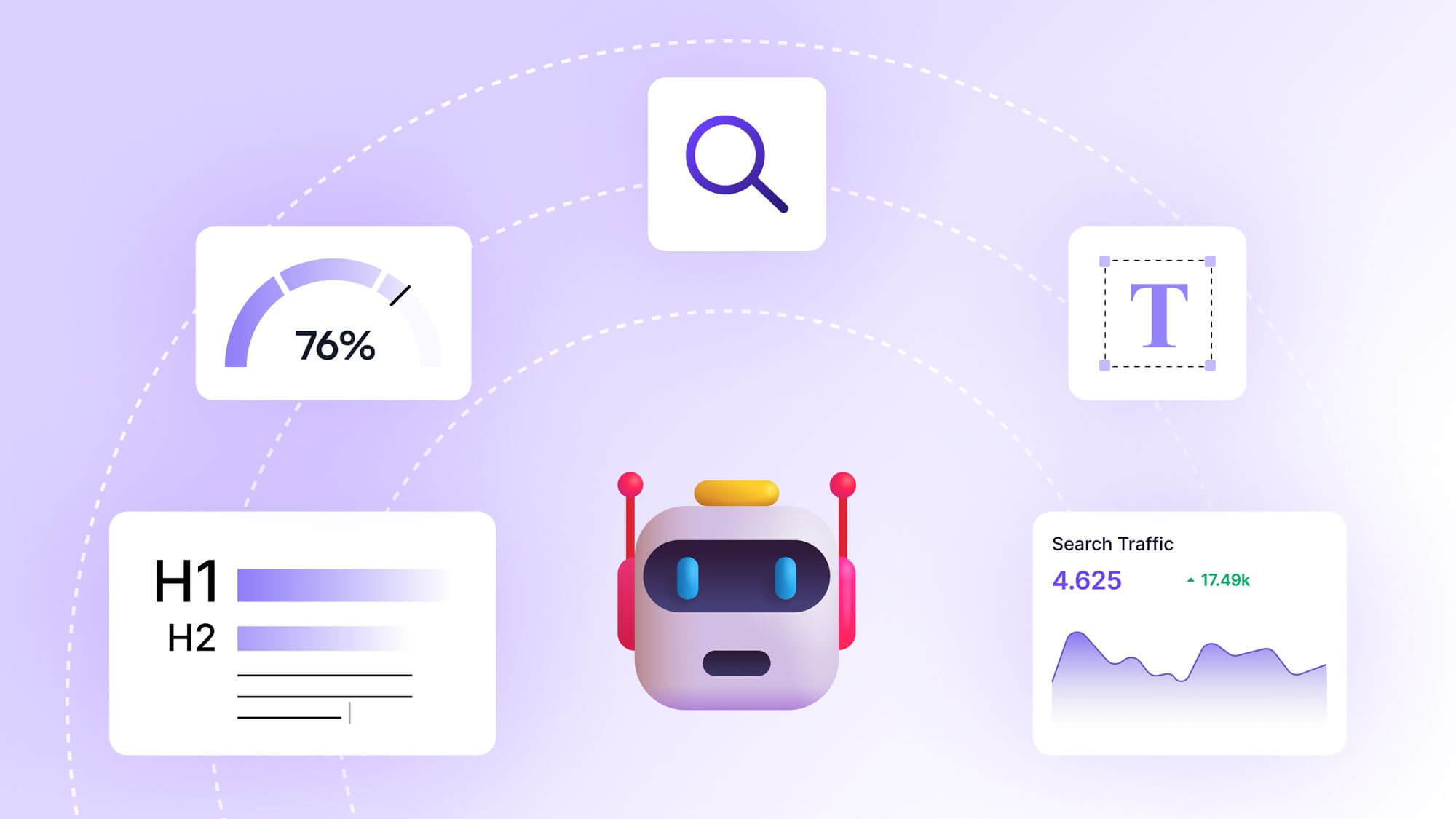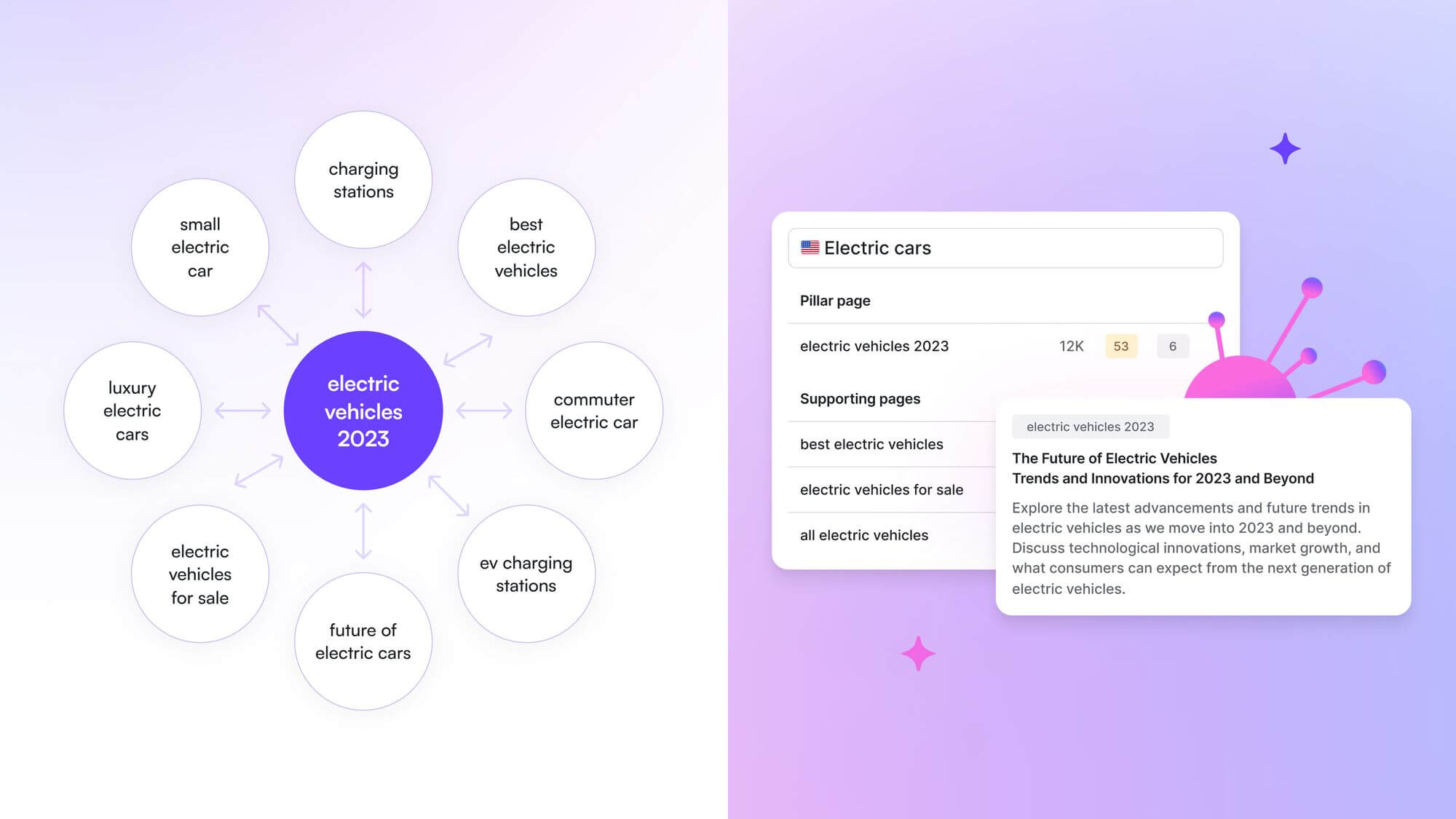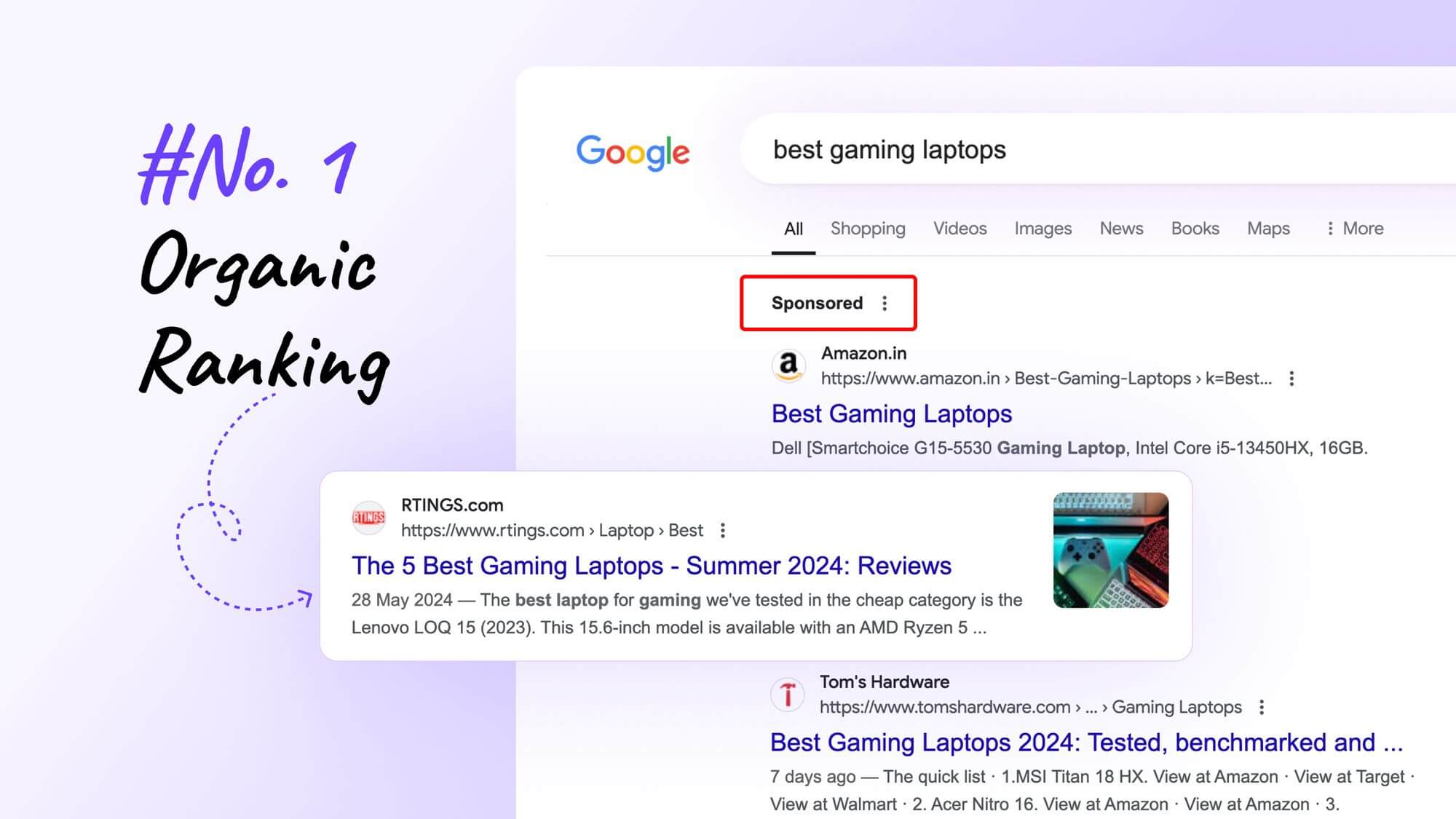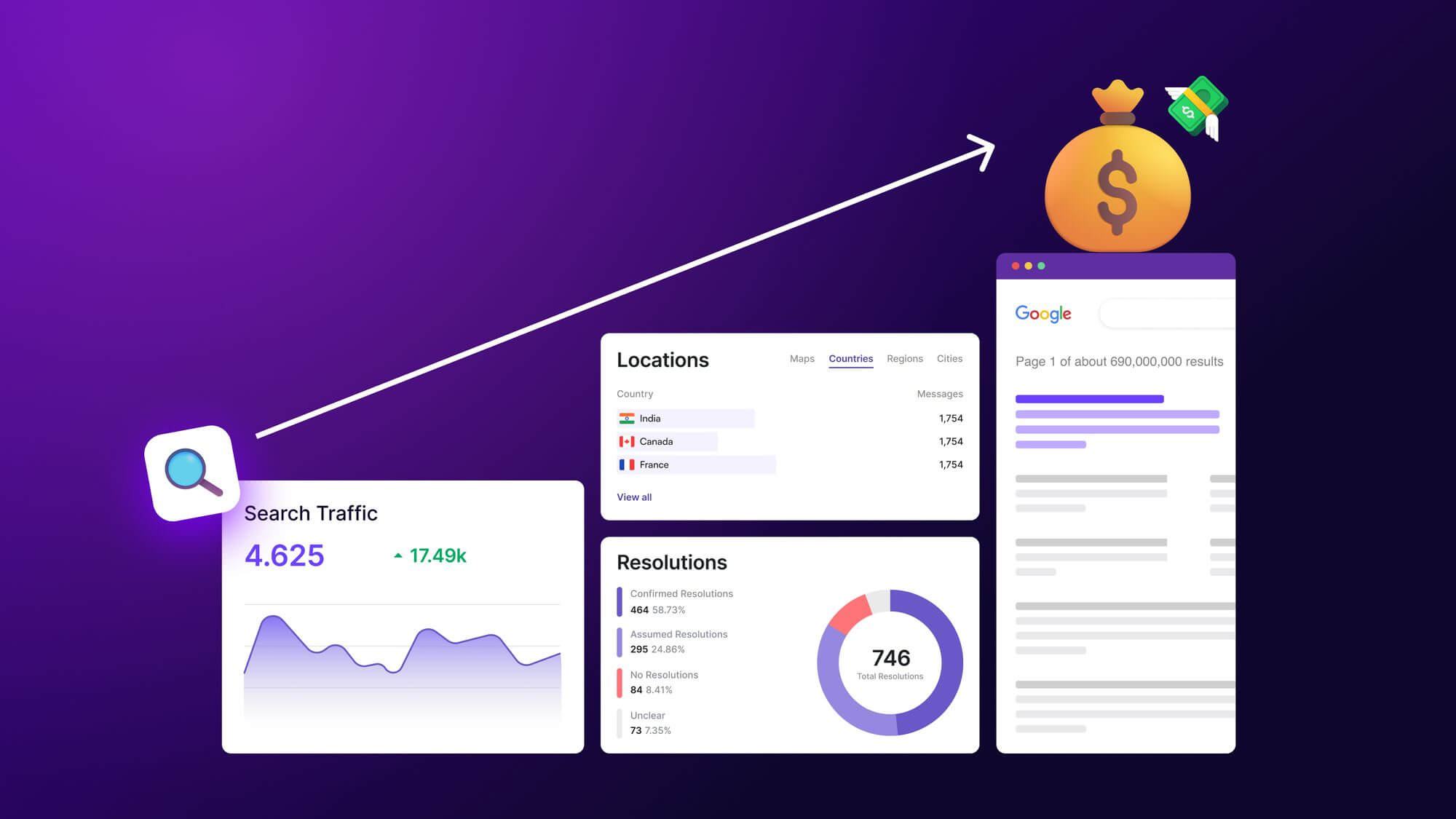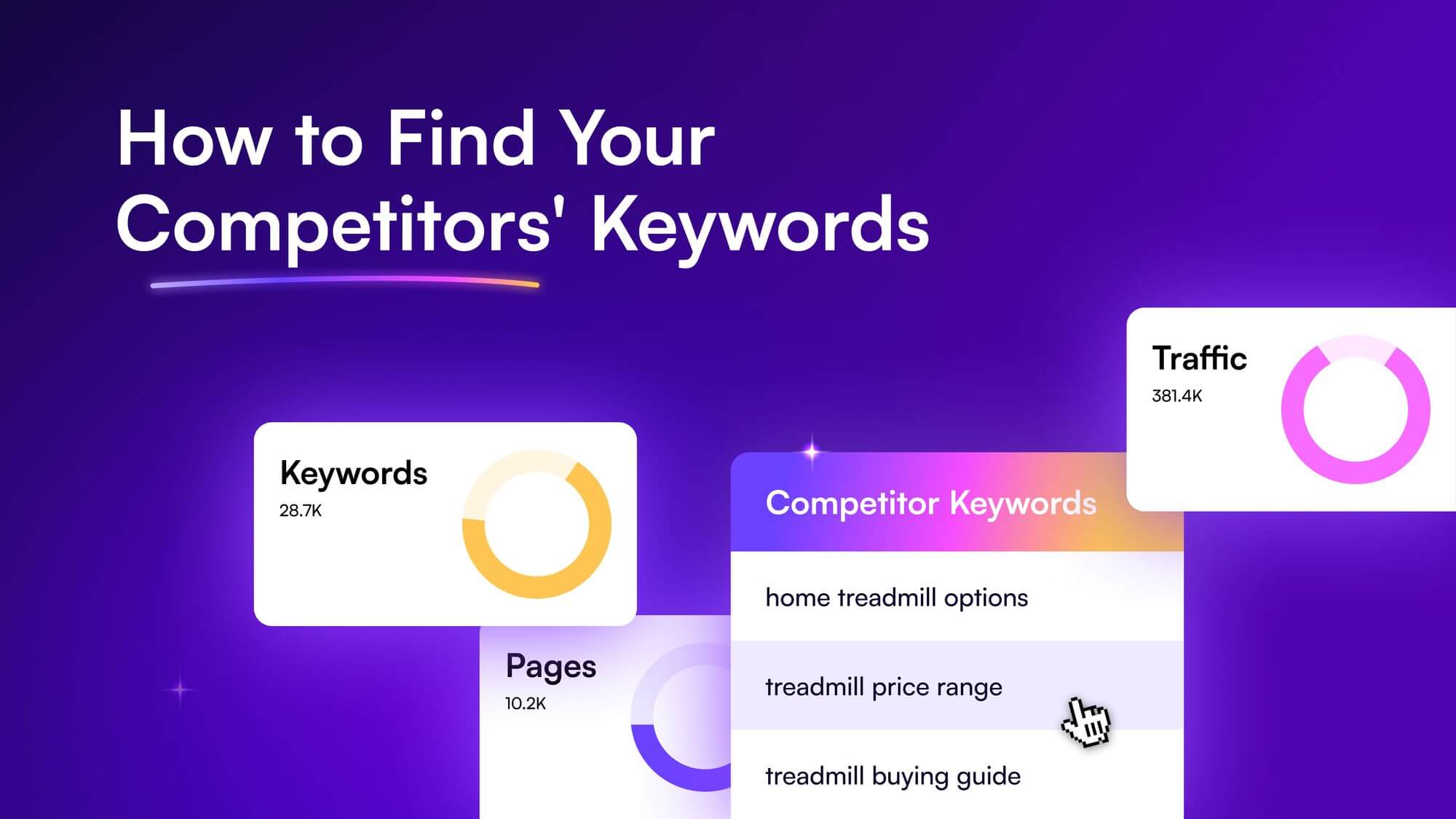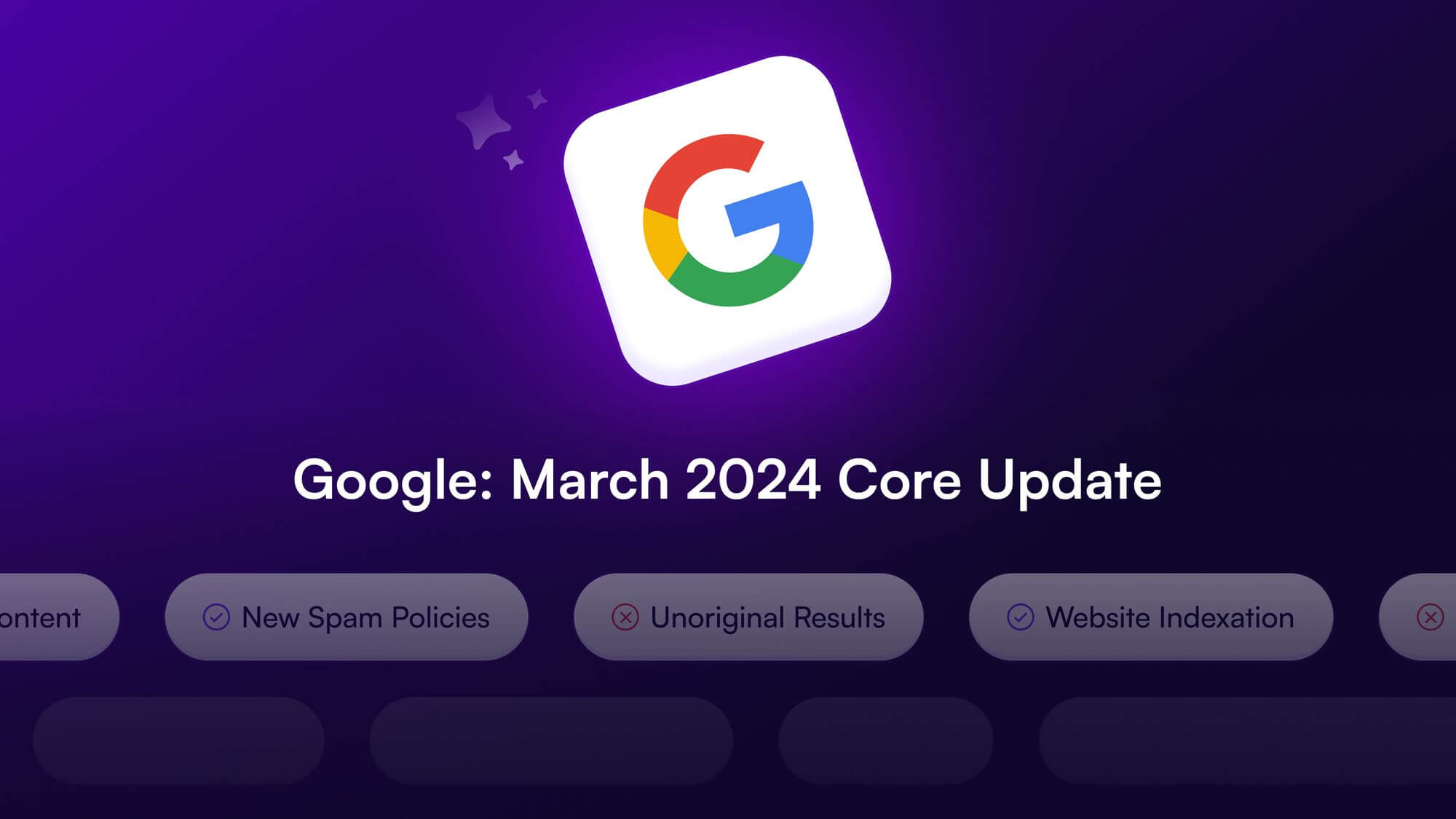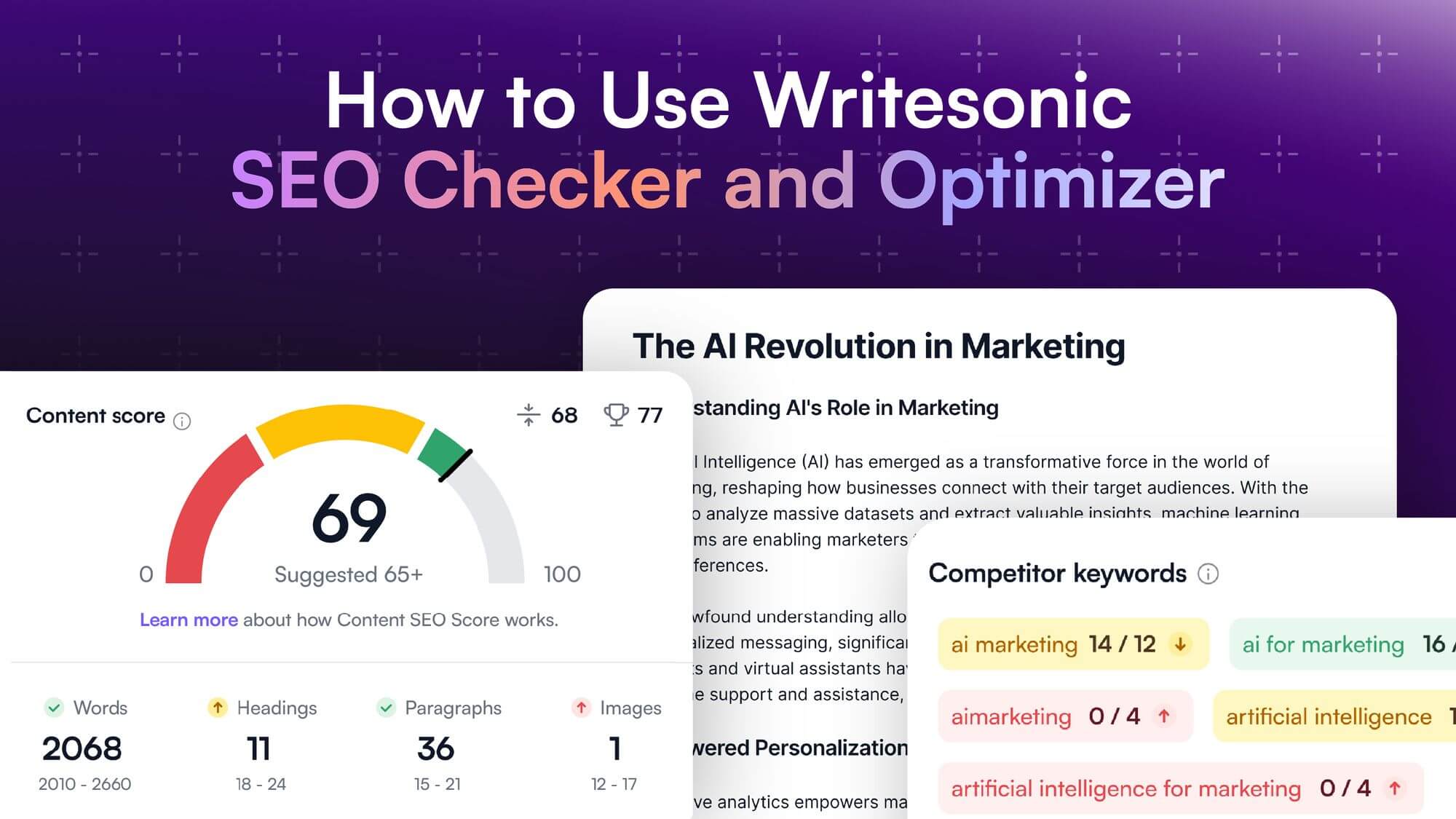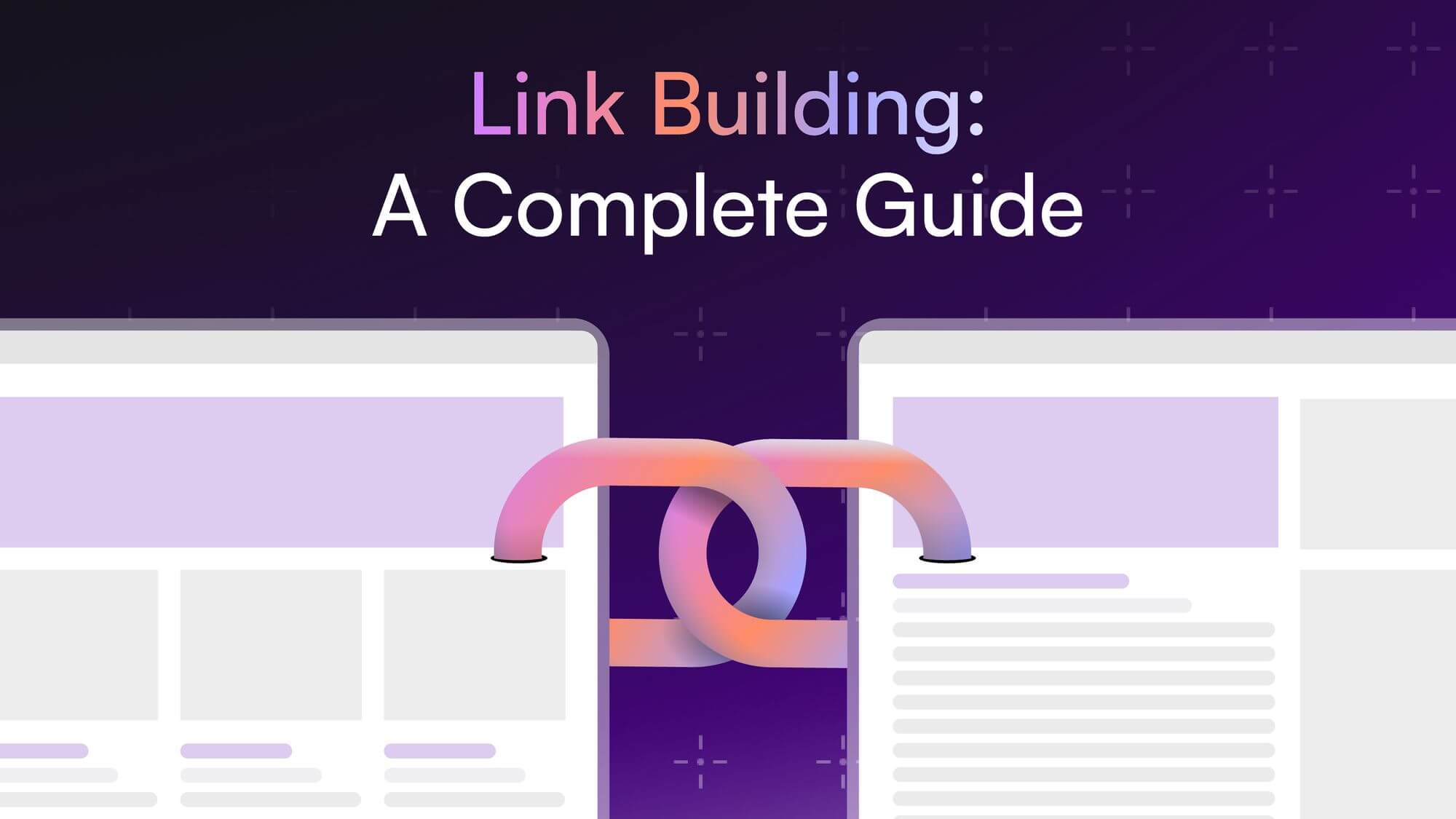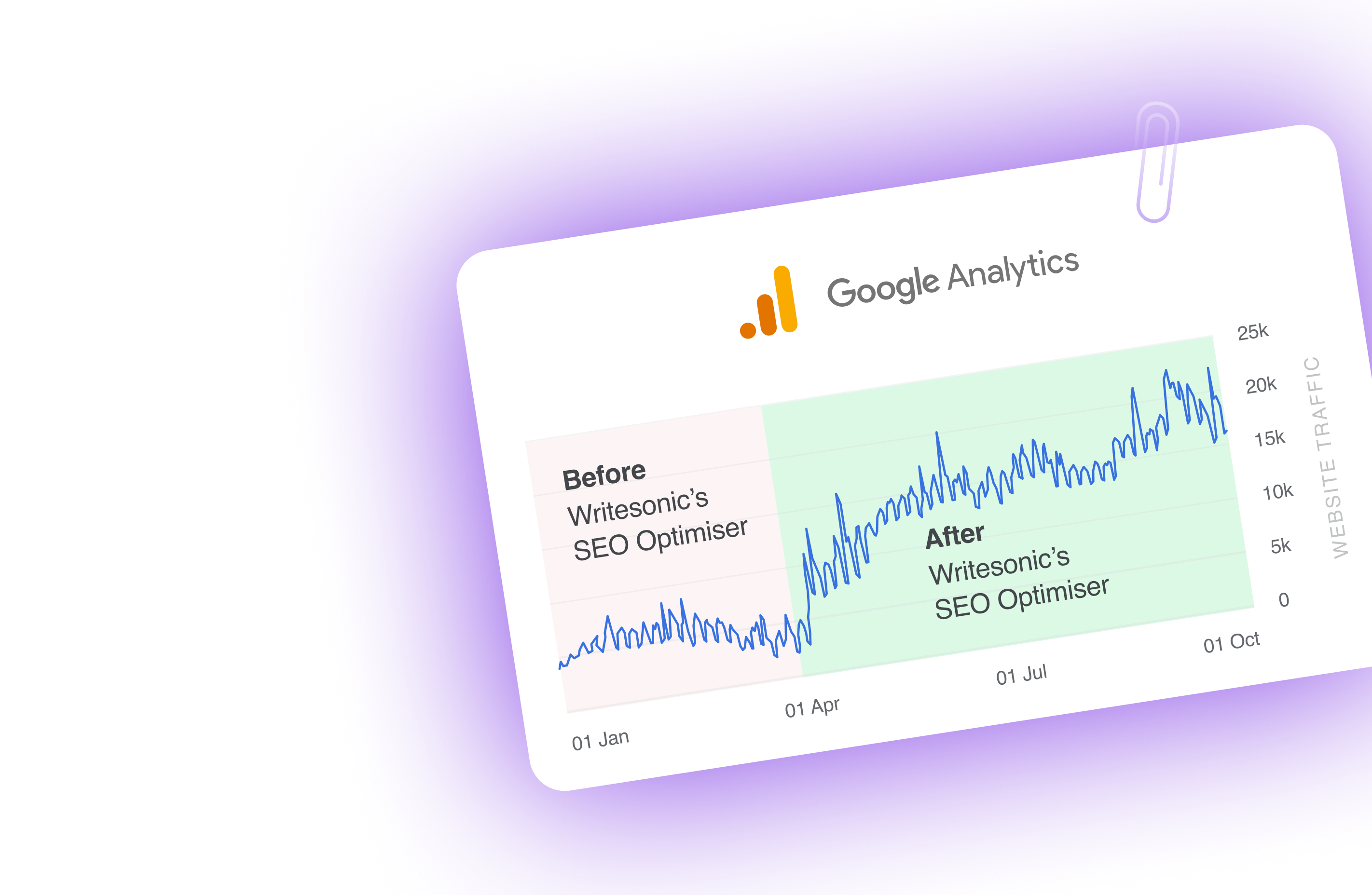In 2025, AI is changing the way we search. Traditional search engines like Google are taking a backstep as people are using AI-driven search engines like ChatGPT and Perplexity to get quick answers.
However, that means that the way we optimize content for search also changes. Instead of just choosing traditional SEO tactics, we need to optimize content for these “generative engines” with generative engine optimization.
Now, what comprises of generative engine optimization (GEO) and how to do GEO. Let’s discuss this in detail in this guide.
But first, let’s learn what these generative engines are.
What Are Generative Engines?
Generative engines are AI-powered search engines that use advanced language models to understand your query and “generate” answers to it — hence the term “generative” engines.
Think ChatGPT, Perplexity, or even Grok. These AI tools don’t just pull up a list of websites like traditional search engines. Instead, when you ask them a query, they provide quick answers synthesized from various sources — including multiple websites, research papers, forums, and news articles.
Here’s an example of how a generative engine works, using ChatGPT:
Generative engines are also conversational in nature. They are powered by large language models (LLMs) that use natural language processing to understand and answer queries. So, even if two users “search” the same query through the same engine, the answers are uniquely constructed depending on how the query was framed.
In 2025, these generative engines are gaining popularity over traditional search engines due to the same reason. They provide quick and to-the-point answers in conversation style. Unlike traditional search engines, users don’t have to scroll through a list of web results or read through long articles to get their queries answered.
In fact, by 2026, the traditional search volume is expected to drop by 25%, with the market share mostly taken over by AI-based search engines and other virtual assistants.
However, this also means that the way we approach content optimization also changes. Instead of only focusing on ranking in traditional search results, you also need to focus on getting mentioned in AI-generated answers to continue getting visibility and traffic.
Since these AI-generated answers don’t directly display website links, “ranking” in them is tricky. However, you can still get mentioned as a brand or a source of information by using generative engine optimization (GEO) — a content optimization strategy dedicated to AI-powered search engines.
What Is Generative Engine Optimization (GEO)?
Generative Engine Optimization (GEO) is the process of optimizing content specifically for AI-powered search engines. Unlike traditional SEO, which focuses on ranking in search results, GEO aims to increase the chances of your content being referenced in AI-generated responses.
Since generative engines don’t display a simple list of links, the goal of GEO isn’t just about keywords or backlinks. It’s about making your content valuable, credible, and easily accessible to AI models.
This involves structuring your content in a way that AI can understand and pull from, such as using clear, well-researched insights, concise explanations, and authoritative sources.
Another key aspect of GEO is entity-based optimization. AI search engines rely on entities — people, brands, and concepts — to generate answers. By ensuring your brand or website is recognized as a trusted entity, you increase your chances of being cited in AI-generated content.
Additionally, formatting plays a role. AI models prioritize structured data, FAQs, and well-segmented content that’s easy to parse. The more digestible and informative your content, the more likely it is to be referenced.
In short, GEO is about adapting to the shift in search behavior, ensuring your content remains discoverable in an AI-first world.
However, if you want your content to get featured in AI-generated answers, you need to first understand how exactly generative engines pull and display content.
How Do Generative Engines Function?
Generative engines operate differently from traditional search engines. Instead of simply retrieving and ranking webpages, they analyze vast amounts of data, extract relevant insights, and generate human-like responses.
This shift in how information is processed and delivered makes understanding their mechanics crucial for effective Generative Engine Optimization (GEO).
The Mechanics of Generative AI Engines
Unlike conventional search engines that rely on keyword matching and link-based ranking systems, generative engines focus on:
- Crawling and indexing content from across the web, including websites, research papers, forums, and news sources.
- Understanding queries through natural language processing (NLP), allowing for contextual responses rather than simple keyword matches.
- Synthesizing responses by extracting relevant information from multiple sources and presenting it in a concise, conversational format.
These engines prioritize three key factors when generating responses:
- Relevance – Does the information directly answer the query in a clear and meaningful way?
- Authority – Is the source credible, trustworthy, and recognized in its field?
- Clarity – Is the content structured in a way that is easy for AI models to interpret and repurpose?
For content to be referenced in AI-generated responses, it must be well-structured, factually accurate, and aligned with these ranking principles.
Common Generative Engines to Optimize For
Each generative engine has unique features and ranking preferences. Here are the major players to consider in your GEO strategy:
- ChatGPT (OpenAI) – Uses Bing-indexed web data and excels at generating conversational, detailed responses.
- Perplexity – Incorporates real-time web searches and often cites sources, making factual accuracy crucial.
- Google AI Overviews – Pulls from Google’s extensive index, favoring authoritative and well-structured content.
- Gemini (Google) – Focuses on factual synthesis, ensuring responses are both comprehensive and accurate.
- Microsoft Copilot – Integrates with Bing and Microsoft’s enterprise data, emphasizing structured and verified information.
- Grok (xAI) – Has access to real-time data from X (formerly Twitter) and also pulls information from the web.
Since each engine operates differently, you need to make sure you cater to all the requirements of generative engines. For instance, Google AI Overviews prioritize trusted domains, while Perplexity values real-time citations. Understanding these nuances helps maximize content visibility across various AI-driven search engines.
If you want to be particularly featured in AI overviews, read our detailed guide on how to rank in AI overviews.
We will discuss how to choose an engine and optimize for it in later steps. But before we dive into the step by step generative engine optimization strategy, let’s understand the core principles of GEO.
Our entire GEO strategy is built around these core principles. These are the main characteristics that define how generative engines form their answers — which means perfecting them will help you ensure your content is highlighted in AI-generated answers.
Core Principles of Generative Engine Optimization
Before we discuss the core principles of GEO, let’s clarify one thing: your content still needs to follow the usual SEO best practices. It should be optimized for target keywords, follow proper internal and external linking structures, and should generally be written to rank in traditional search engines.
That’s because most generative engines currently pick content from web pages that are top-ranking in traditional searches. Generative engine optimization isn’t an alternative to traditional SEO. Rather, it is a strategy that enhances the usual SEO results and increases the chance of your content ranking in AI-powered search engines.
Now, let’s dive into the core principles of Generative Engine Optimization (GEO). These principles form the foundation of any successful GEO strategy, helping ensure your content gets recognized and referenced by AI-driven search engines.
Focus on User Intent
Generative engines prioritize user intent over keyword stuffing. Unlike traditional search engines that rely heavily on keyword matches, AI-driven engines focus on delivering contextually relevant answers.
That means your content should directly address the needs behind user queries — whether they are informational (“What is GEO?”), navigational (“GEO tools”), or transactional (“Buy GEO software”).
Instead of forcing keywords, structure your content around natural, intent-driven language that AI can recognize as genuinely helpful.
Clarity and Structure
AI models process vast amounts of information, and they favor content that is well-structured and easy to interpret. To improve your chances of being referenced, your content should be:
- Clearly organized with headings and subheadings.
- Broken into digestible sections using bullet points and lists.
- Presented in a concise and scannable format.
Messy, unstructured content gets ignored — by both AI and human readers. The more readable and structured your content, the more likely it is to be pulled into AI-generated responses.
Authority and Credibility
Generative engines are designed to prioritize information from authoritative and trustworthy sources. To build credibility and increase your chances of being referenced, ensure that your content is:
- Well-researched and backed by credible sources.
- Citing authoritative studies, research papers, or expert opinions.
- Consistently updated with accurate and relevant information.
Additionally, maintaining a strong digital presence across multiple platforms (such as social media, business directories, and authoritative websites) helps establish your brand as a recognized entity. AI search engines are more likely to trust and pull information from sources that demonstrate expertise and reliability.
Conversational Tone
Unlike traditional SEO, where formality might work, generative engines favor content that mimics natural human conversations.
After all, AI-generated responses are designed to be user-friendly and easy to understand, meaning your content should follow suit. A conversational tone makes your content more engaging and AI-friendly.
For example, instead of writing: “Optimization techniques for generative engines involve structuring data for enhanced visibility.”
Try: “Here’s how you can make sure AI picks up your content: keep it structured, clear, and straight to the point.”
This approach not only appeals to AI models but also improves user engagement, increasing the likelihood that your content gets cited in AI-generated responses.
Now that you’ve understood the core principles of GEO, we can discuss how to apply them to build a step by step strategy for generative engine optimization.
A Step-by-Step Guide On How To Do GEO
Now that we’ve covered the core principles of Generative Engine Optimization (GEO), let’s dive into a step-by-step strategy to ensure your content gets recognized and referenced by AI-driven search engines.
Step 1: Research and Analyze Your Audience
Before creating content, it’s crucial to understand what your audience is searching for and how AI-powered search engines interpret those queries.
Unlike traditional SEO, where keyword research focuses on rankings, GEO requires a deeper understanding of how AI models generate responses and select sources. And most importantly, you need to know:
- Which AI engines your audience use to search queries
- How these AI models generate answers — whether they mention brands, sources, etc..
- What kind of content you need to create to get mentioned by these generative engines
Start by exploring tools like Google Trends and AnswerThePublic to identify the questions your audience frequently asks. Instead of just looking for high-volume keywords, focus on conversational, long-tail queries that match natural language searches.
For example, rather than targeting a broad keyword like “AI search optimization,” look at specific user-driven questions such as “How do I optimize my website for ChatGPT?” or “What factors influence AI search rankings?”
Once you’ve identified key questions, you can check the responses generated by ChatGPT, Perplexity, or Google AI Overviews for those queries. Take note of which sources are being cited, what type of content is being referenced, and how the AI structures its answers.
Are the responses pulling directly from blog posts, research papers, or forum discussions? Are certain websites consistently appearing in AI-generated answers? Understanding these patterns will help shape your content strategy to align with AI preferences.
Pro tip: Think beyond keywords when conducting research for generative engine optimization. AI search engines don’t just match words; they synthesize responses based on contextual understanding. That means your content should be designed to provide value, depth, and clarity — so that AI engines recognize it as a high-quality source worth referencing.
Step 2: Optimize for AI Readability
AI-driven search engines prioritize content that is well-structured, easily digestible, and contextually relevant. And that’s what people prefer as well.
Remember: one of the biggest reasons why people switch to AI engines is that they provide conversational, easy-to-understand answers. You can format your content in a similar style by following these tips:
- Use clear formatting: AI engines prefer content that is broken down into logical segments. Ensure your content has well-defined headings, subheadings, and structured sections.
- Write concise paragraphs: Keep your paragraphs short and to the point. AI models favor easily digestible information over dense text blocks.
- Utilize bullet points and lists: Organizing key takeaways in bullet points helps AI engines identify and extract important information quickly.
- Prioritize natural language: Generative engines rely on semantic analysis rather than keyword matching. Instead of stuffing keywords, integrate natural language variations and synonyms of important terms. For example, if optimizing for “Generative Engine Optimization”, also incorporate related terms like “AI search ranking”, “generative search optimization”, or “AI content visibility”.
By implementing these strategies, you ensure that your content is not only AI-friendly but also valuable to the users. The more structured, precise, and informative your content, the greater the likelihood it will be referenced in AI-generated answers.
If you have huge content volumes or find it difficult to optimize individual blog posts or content pieces for GEO, you can use an SEO AI Agent like Chatsonic to automate the process.
Simply copy-paste your content into the AI agent chatbox and ask it to optimize the content for GEO.
The AI agent analyzes the content and gives you specific recommendations for that particular blog post or content piece to ensure it gets featured in AI-generated answers. You can then either manually implement each of these edits or follow up with the AI agent and ask it to deliver the edited article.
Either way, you’ll get highly tailored suggestions that boost your content’s GEO.
The SEO AI agent is also capable of doing a lot more. It can conduct the initial research, write full-fledged articles and social media copies, and even analyze competitors.
If you’re interested in exploring what more the AI agent can do for SEO, then here’s a detailed guide about Chatsonic.
Step 3: Build Authority and Credibility
Generative engines don’t just prioritize content — they prioritize trusted content. If you want your content to be featured in AI-generated responses, you need to establish yourself as an authoritative source.
AI models reference credible, high-quality information, which means your content should reflect expertise, accuracy, and trustworthiness.
- Cite reputable sources: Include links to well-known publications, research papers, and industry reports to reinforce credibility.
- Showcase expertise: Demonstrate subject matter expertise through in-depth analysis, case studies, and data-driven insights. The more comprehensive and well-researched your content, the higher its chances of being cited by AI engines.
- Update content regularly: Generative models prioritize up-to-date information. Frequently revisiting and updating your content ensures continued relevance and increases the likelihood of it being referenced.
- Earn high-quality backlinks: AI engines factor in domain authority. If other trusted sites link to your content, AI models are more likely to recognize it as a valuable source.
Additionally, AI models recognize and reference well-known entities. If your brand, website, or personal name is mentioned in reputable sources or widely recognized in your industry, your chances of being referenced in AI-generated responses increase significantly.
Step 4: Distribute Content Across Platforms
Generative engines don’t just pull from websites—they scan social platforms, forums, and online communities. Expanding your content’s reach beyond your own site increases its chances of being picked up by AI search engines.
Check this answer about the best AI search engine by Grok:
It mentions six X posts as sources. The search engines which are mentioned in these posts naturally get more visibility.
Posting on platforms like Reddit, Quora, and X (formerly Twitter) can significantly boost your visibility. AI engines often scrape these platforms for authoritative answers, so engaging in discussions within your niche is an effective strategy.
Instead of just linking to your content, contribute meaningful insights to ongoing conversations. For example, if someone asks about GEO on Reddit, craft a thoughtful response summarizing key points from your guide, then naturally introduce a link to your full article.
The same applies to industry-specific forums and other social media platforms. AI models index valuable discussions from these spaces, making them prime locations to establish credibility. By actively participating and sharing your expertise, you increase the likelihood of your content being cited in AI-generated responses.
Pro Tip: Instead of only promoting your own content, engage with others’ posts by adding value. This builds trust within communities and makes AI engines more likely to recognize your contributions as relevant and credible sources.
Step 5: Implement Structured Data and Schema Markup
Since AI models prioritize structured content, using schema markup helps them understand and categorize your data more effectively.
Implementing FAQ schema allows AI-driven engines to extract structured Q&A formats, increasing the chances of your content being directly referenced in AI responses. Similarly, How-To schema is invaluable for step-by-step guides, making them more likely to appear in AI-generated results.
Beyond these, consider using Article schema for blog posts, Product schema for e-commerce, and Organization schema to reinforce brand authority. The more structured your content, the better AI models can interpret and prioritize it.
Pro Tip: Use Google’s Structured Data Testing Tool to verify your schema implementation, fix errors, and ensure your markup is AI-friendly. Regularly update and refine structured data as AI search capabilities evolve.
Step 6: Optimize for Voice Search
AI-driven search engines are deeply integrated with voice assistants like Alexa, Siri, and Google Assistant. As more users rely on voice search, optimizing your content for conversational queries becomes crucial for GEO. Unlike traditional text-based searches, voice queries tend to be longer, more natural, and often phrased as complete questions.
To align with how people interact with voice assistants:
- Target natural language queries: Focus on how people talk rather than just keywords. Instead of optimizing for “GEO best practices”, structure content around phrases like “What are the best practices for optimizing content for AI search?”.
- Use question-based formatting: AI assistants pull answers from content structured as FAQs, Q&A formats, and direct answers. Including well-organized sections that address who, what, where, when, why, and how can improve your chances of being referenced.
- Leverage conversational tone: Voice search favors content that sounds natural when spoken aloud. Avoid overly technical jargon and keep explanations clear and engaging.
- Optimize for featured snippets: Since voice assistants often pull from Google’s featured snippets, structure your content to fit snippet-friendly formats like concise definitions, bullet-point lists, and step-by-step instructions.
- Improve page load speed and mobile experience: Many voice searches happen on mobile devices, so a fast-loading, mobile-optimized site increases the likelihood of your content being served as a response.
Pro Tip: Use Google’s “People Also Ask” and voice-to-text tools to discover how real users phrase their questions. Craft your content to mirror these natural speech patterns to enhance your visibility in voice search results.
Step 7: Monitor Performance and Adapt
GEO isn’t a one-and-done strategy—it requires continuous monitoring and optimization.
- Track AI citations: See if your content is being referenced in ChatGPT, Perplexity, or other AI engines.
- Analyze user engagement: Use tools like Google Analytics to monitor time on page, bounce rates, and conversions.
- Refine your strategy: If certain content isn’t getting picked up, tweak formatting, add more authority signals, or improve clarity.
Pro Tip: Regularly experiment with different content formats (videos, infographics, in-depth guides) to see what resonates best with AI-driven search engines.
Final Thoughts: How To Do Generative Engine Optimization (GEO)
Generative engine optimization (GEO) is tricky, in the sense, people are still trying to figure out how to optimize for AI-driven search engines. However, one thing’s clear: generative engines prefer content that provides value and is easy to understand.
If your content already follows the usual SEO best practices, optimizing it for generative engines is easier. The best way to do it is to use an SEO AI agent like Chatsonic that can provide tailored GEO suggestions based on the content piece you want to optimize.
Simply ask Chatsonic to analyze your content and provide GEO suggestions — and you’ll get actionable insights that help your content get featured in AI-generated answers.
Ready to optimize your content for GEO?

